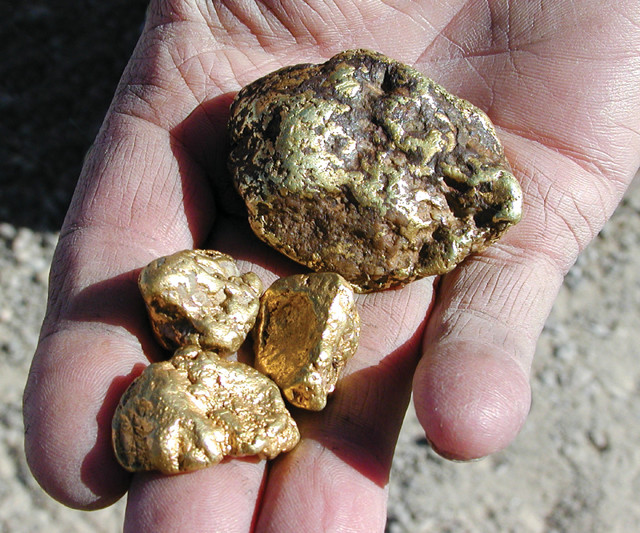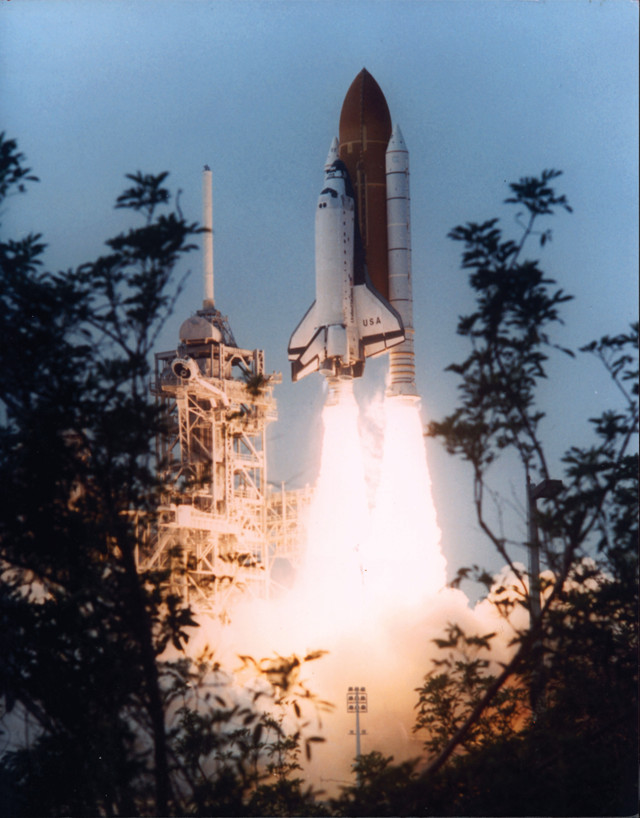
by U.S. Geological Survey Thursday, June 14, 2018
Micheal W. George, mineral commodity specialist for the U.S. Geological Survey, has compiled the following information on gold, one of the most coveted metals.

For millennia prior to the 20th century, most gold was found in nugget form in placer deposits — the type that can be panned from streams. Credit: © Thomas McGuire, ESW Image Bank
Gold has been highly valued for thousands of years because of its scarcity, durability and characteristic yellow color — reminiscent of the sun, which some early civilizations worshipped as a deity. Crude forms of gold jewelry and money originated soon after the founding of the first cities, around 4000 B.C. People first recovered gold from streambed gravels (placer deposits), where it occurred as metallic nuggets. Gold nuggets have long been prized possessions because they can be used without complicated processing — easily fashioned into bars of different standard weights and into ornaments and jewelry that served as portable wealth. For more than five millennia, until well into the 20th century, jewelry, coinage and currency backing were the only important uses of gold.

A significant use for gold is in electronics, such as that used in aerospace applications. For example, more than 40 kilograms of gold were used in the construction of the Columbia space shuttle. Credit: : NASA Marshall Space Flight Center
By the late 20th century, new applications were developed that take advantage of gold’s unique physicochemical properties, making gold an industrial metal of great technological importance. In electronics, gold’s main use is in contacts, switches, relays and connectors. A thin layer of gold on a contact, for example, ensures rapid dispersion of heat, inhibits tarnishing and provides a surface with minimal electrical contact resistance. In space, gold sheets only 0.15 millimeters thick are ideal for reflecting radiation from the sun on vehicles and suits.
Gold occurs in many different geologic environments. Historically, the most productive deposits in the United States have been placer (deposits in which gold nuggets and particles may be concentrated by rivers or streams, for example), gold-quartz lode (usually deep hydrothermal deposits where the gold infills faults and fractures), epithermal (usually shallow hydrothermal deposits), and Carlin-type gold deposits (large-tonnage, low-grade deposits with fine-grained gold). In the United States, miners first worked placer deposits in the 1770s. Placer deposits remained the dominant source of gold until the early 1900s. Today, most gold is mined from Carlin-type deposits as there are few significant placer operations left.
Visit minerals.usgs.gov/minerals for more information on gold.
Worldwide gold production is about 2,500 metric tons each year, worth about $56 billion in 2007.
Gold is mined in almost every country in the world. The United States is the fourth leading producer, after Australia, South Africa and China.
South Africa has about one-half of the world’s identified gold resources.
In 2007, only three countries produced more gold than Nevada, which produces 80 percent of the United States’ gold. All U.S. gold comes from nine western states.
In the 7th century B.C., the Etruscans used gold to fix false teeth; today gold is still used in dentistry because it is nontoxic and durable.
Approximately 70 percent of the world’s gold is held in jewelry and private investments. The remainder is in official holdings by financial institutions (18 percent) and in other fabrication such as electronics, dentistry and industrial uses (12 percent).
Your gold jewelry may contain gold that was in Cleopatra’s or other ancient royalties’ priceless gold items because gold has been recycled through the ages.
All the gold ever mined in the world would only fill one-third of the Washington Monument.
Serendipity 3, a restaurant in New York City, serves gold on an ice cream sundae. The Golden Opulence Sundae costs $1,000.
© 2008-2021. All rights reserved. Any copying, redistribution or retransmission of any of the contents of this service without the expressed written permission of the American Geosciences Institute is expressly prohibited. Click here for all copyright requests.